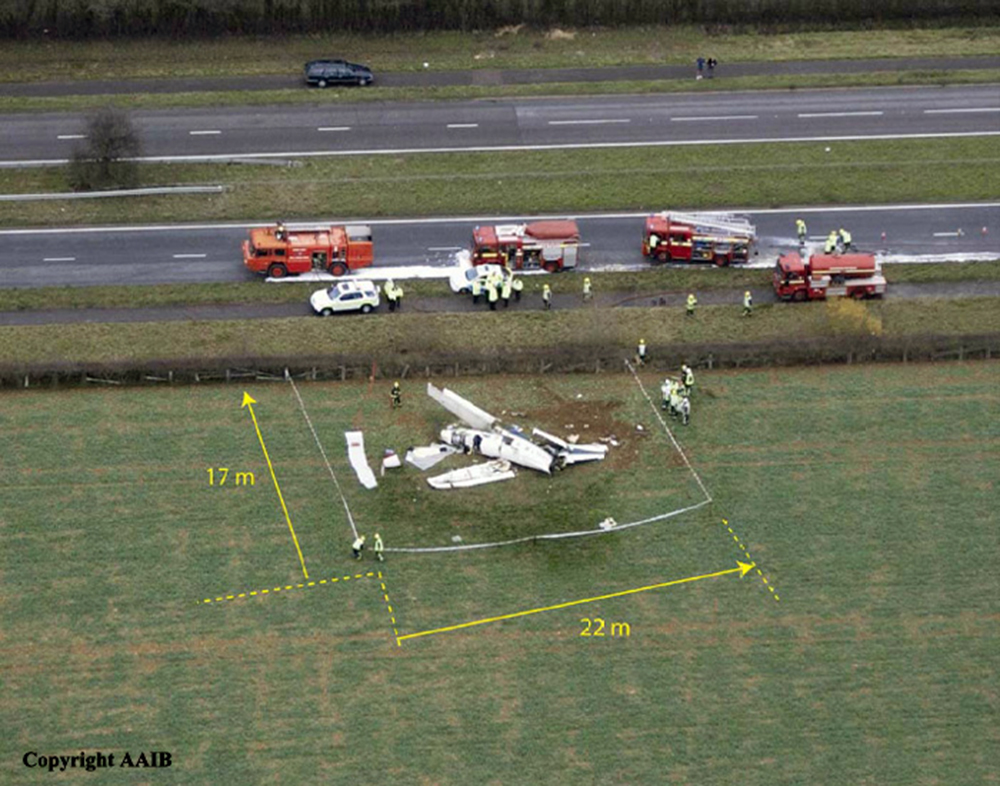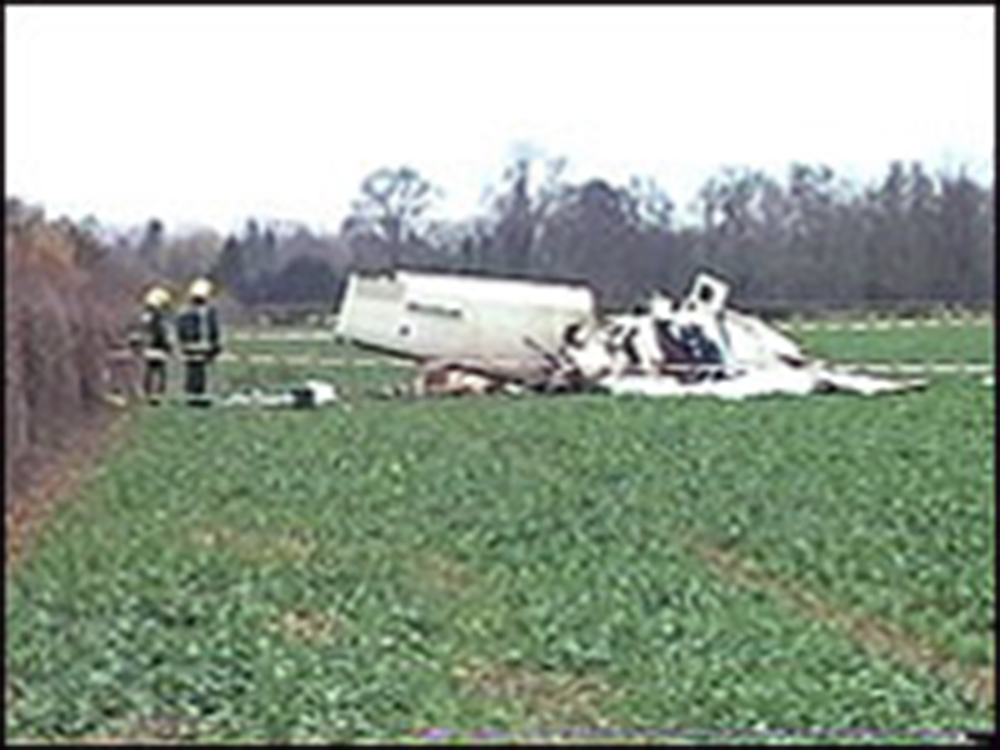Country
code
Oxfordshire
Crash of a Cessna 414 Chancellor in Enstone
Date & Time:
Jun 26, 2018 at 1320 LT
Registration:
N414FZ
Survivors:
Yes
Schedule:
Enstone – Dunkeswell
MSN:
414-0175
YOM:
1971
Crew on board:
1
Crew fatalities:
Pax on board:
1
Pax fatalities:
Other fatalities:
Total fatalities:
0
Captain / Total hours on type:
9.00
Circumstances:
The aircraft departed Dunkeswell Airfield on the morning of the accident for a flight to Retford (Gamston) Airfield with three passengers on board, two of whom held flying licences. The passengers all reported that the flight was uneventful and after spending an hour on the ground the aircraft departed with two passengers for Enstone Airfield. This flight was also flown without incident.The pilot reported that before departing Enstone he visually checked the level in the aircraft fuel tanks and there was 390 ltr (103 US gal) on board, approximately half of which was in the wingtip fuel tanks. After spending approximately one hour on the ground the pilot was heard to carry out his power checks before taxiing to the threshold of Runway 08 for a flight back to Dunkeswell with one passenger onboard). During the takeoff run the left engine was heard to stop and the aircraft veered to the left as it came to a halt. The pilot later recalled that he had seen birds in the climbout area and this was a factor in the abandoned takeoff. The aircraft was then seen to taxi to an area outside the Oxfordshire Sport Flying Club, where the pilot attempted to start the left engine, during which time the right engine also stopped. The right engine was restarted, and several attempts appeared to have been made to start the left engine, which spluttered into life before stopping again. Eventually the left engine started, blowing out clouds of white and black smoke. After the left engine was running smoothly the pilot was seen to taxi to the threshold for Runway 08. The takeoff run sounded normal and the landing gear was seen to retract at a height of approximately 200 ft agl. The climbout was captured on a video recording taken by an individual standing next to the disused runway, approximately 400 m to the south of Runway 08. The aircraft was initially captured while it was making a climbing turn to the right and after 10 seconds the wings levelled, the aircraft descended and disappeared behind a tree line. After a further 5 seconds the aircraft came into view flying west over buildings to the east of the disused runway at a low height, in a slightly nose-high attitude. The right propeller appeared to be rotating slowly, there was some left rudder applied and the aircraft was yawed to the right. The left engine could be heard running at a high rpm and the landing gear was in the extended position. The aircraft appeared to be in a gentle right turn and was last observed flying in a north-west direction. The video then cut away from the aircraft for a further 25 seconds and when it returned there was a plume of smoke coming from buildings to the north of the runway. The pilot reported that the engine had lost power during a right climbing turn during the departure. He recovered the aircraft to level flight and selected the ‘right fuel booster’ pump (auxiliary pump) and the engine recovered power. He decided to return to Enstone and when he was abeam the threshold for Runway 08 the right engine stopped. He feathered the propeller on the right engine and noted that the single-engine performance was insufficient to climb or manoeuvre and, therefore, he selected a ploughed field to the north of Enstone for a forced landing. During the approach the pilot noticed that the left engine would only produce “approximately 57%” of maximum power, with the result that he could not make the field and crashed into some farm buildings. There was an immediate fire following the accident and the pilot and passenger both escaped from the wreckage through the rear cabin door. The pilot sustained minor burns. The passenger, who was taken to the John Radcliffe Hospital in Oxford, sustained burns to his body, a fractured vertebra, impact injuries to his chest and lacerations to his head.
Probable cause:
The pilot and the passengers reported that both engines operated satisfactory on the two flights prior to the accident flight. No problems were identified with the engines during the maintenance activity carried out 25 and 5 flying hours prior to the accident and the engine power checks carried out at the start of the flight were also satisfactory. It is therefore unlikely that there was a fault on both engines which would have caused the left engine to stop during the aborted takeoff and the right engine to stop during the initial climb. The aircraft was last refuelled at Dunkeswell Airfield and had successfully undertaken two flights prior to the accident flight. There had been no reports to indicate that the fuel at Dunkeswell had been contaminated; therefore, fuel contamination was unlikely to have been the cause. The pilot reported that there was sufficient fuel onboard the aircraft to complete the flight, which was evident by the intense fire in the poultry farm, most probably caused by the fuel from the ruptured aircraft fuel tanks. With sufficient fuel onboard for the aircraft to complete the flight, the most likely cause of the left engine stopping during the aborted takeoff, and the right engine stopping during the accident flight, was a disruption in the fuel supply between the fuel tanks and engine fuel control units. The reason for this disruption could not be established but it is noted that the fuel system in this design is more complex than in many light twin-engine aircraft. The AAIB calculated the single-engine climb performance during the accident flight using the performance curves3 for engines not equipped with the RAM modification. It was a hot day and the aircraft was operating at 280 lb below its maximum takeoff weight. Assuming the landing gear and flaps were retracted, the engine cowls on the right engine were closed and the aircraft was flown at 101 kt, then the single-engine climb performance would have been 250 ft/min. However, the circumstances of the loss of power at low altitude would have been challenging and, shortly before the accident, the aircraft was seen flying with the landing gear extended and the right engine still windmilling. These factors would have adversely affected the single-engine performance and might explain why the pilot was no longer able to maintain height.
Final Report:
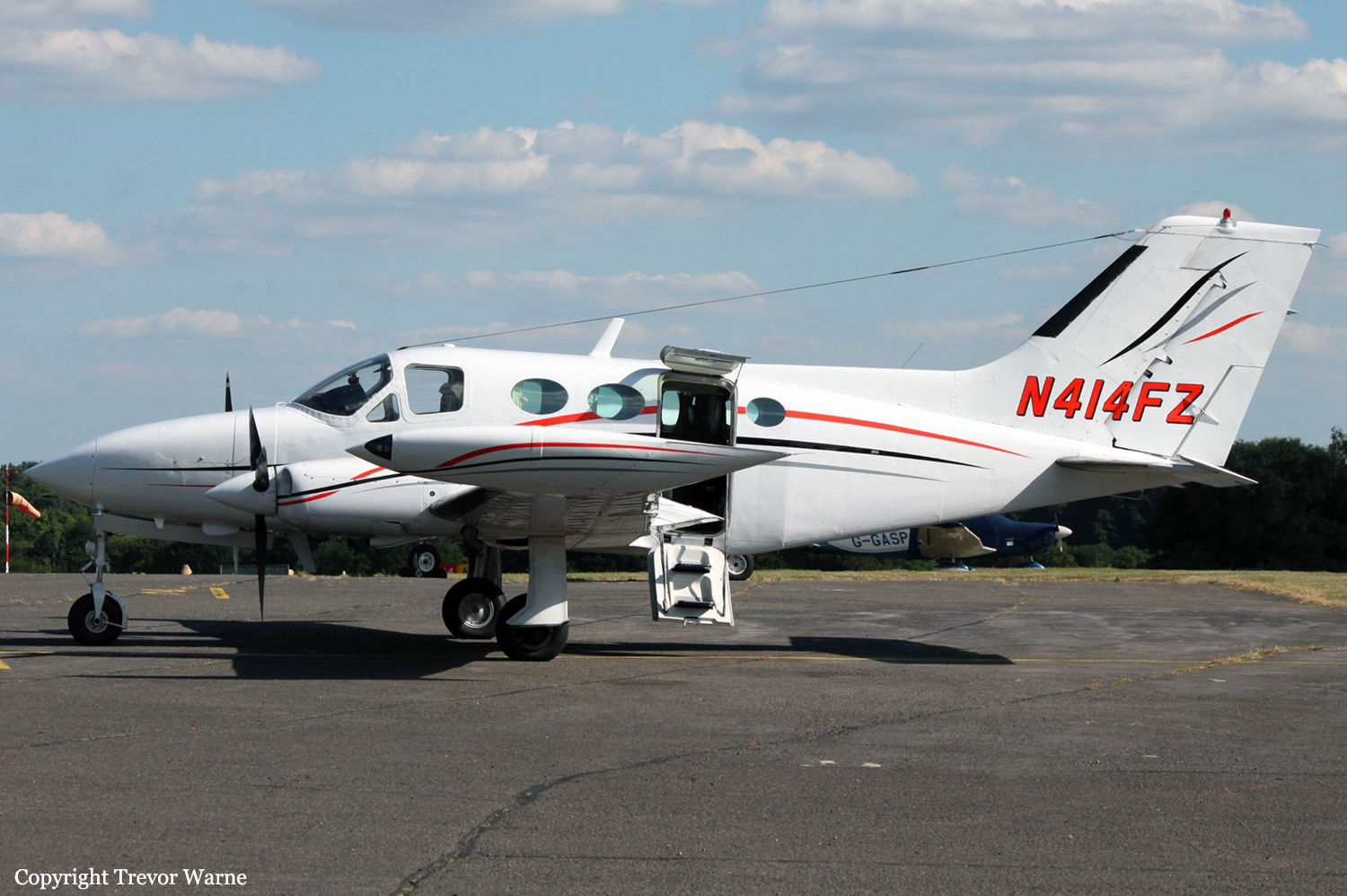
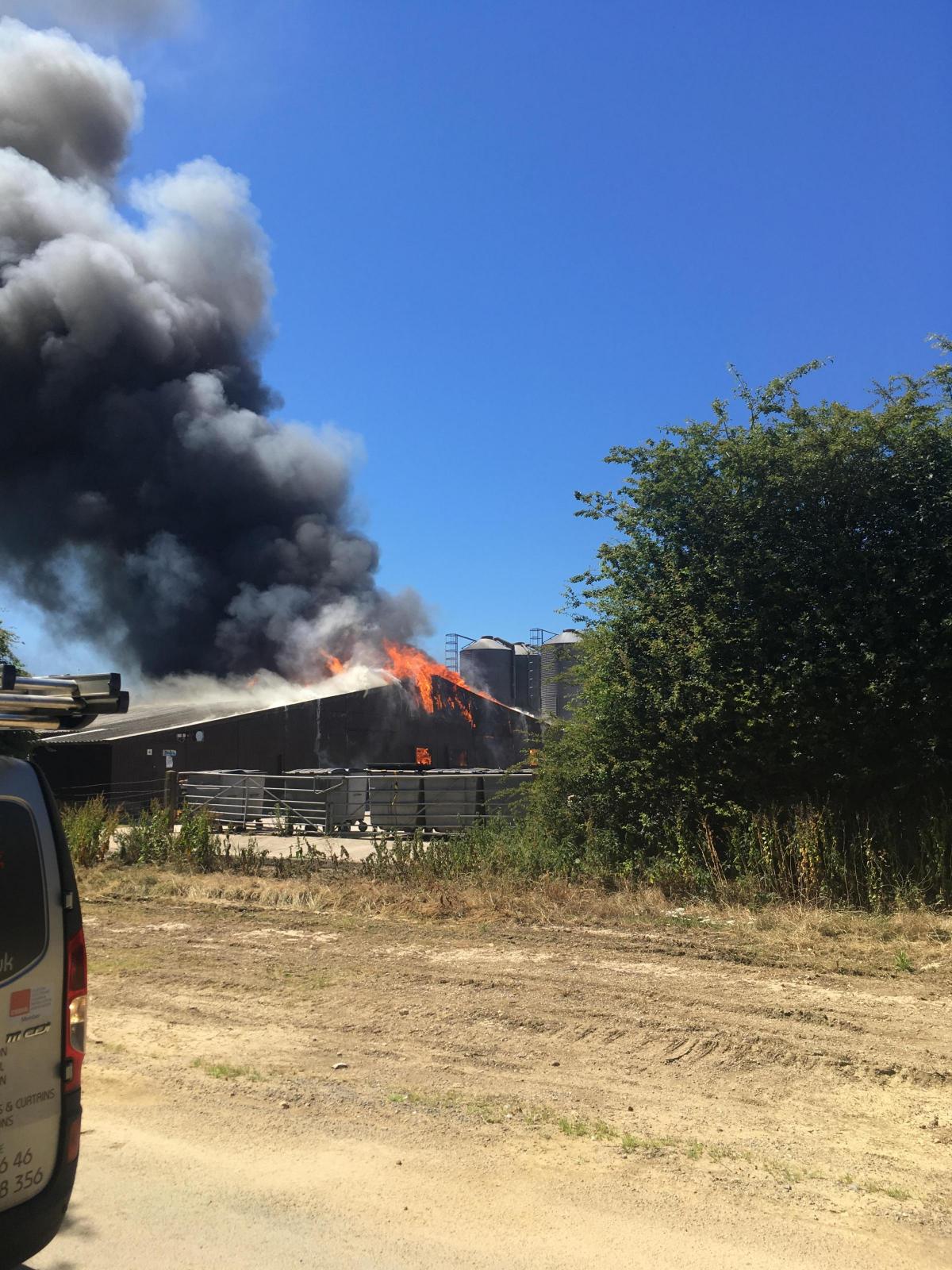

Crash of a Lockheed C.3A Hercules in Brize Norton
Date & Time:
May 6, 2010
Registration:
XV304
Survivors:
Yes
Schedule:
Lyneham - Brize Norton
MSN:
4272
YOM:
1968
Crew on board:
4
Crew fatalities:
Pax on board:
0
Pax fatalities:
Other fatalities:
Total fatalities:
0
Circumstances:
The crew was engaged in a troop transfer mission between RAF Lyneham and Brize Norton. Following an uneventful flight, the four engine aircraft made a wheels up landing at Brize Norton Airport. It slid on the runway for few dozen metres before coming to rest. All four crew members escaped uninjured while the aircraft was damaged beyond repair.
Probable cause:
It appears that the crew failed to follow the approach checklist and forgot to lower the undercarriage. There was no reaction or any corrective action from the crew when the alarm sounded in the cockpit on approach, informing the crew that the undercarriage was not lowered. No technical anomalies were found on the aircraft or its equipment.
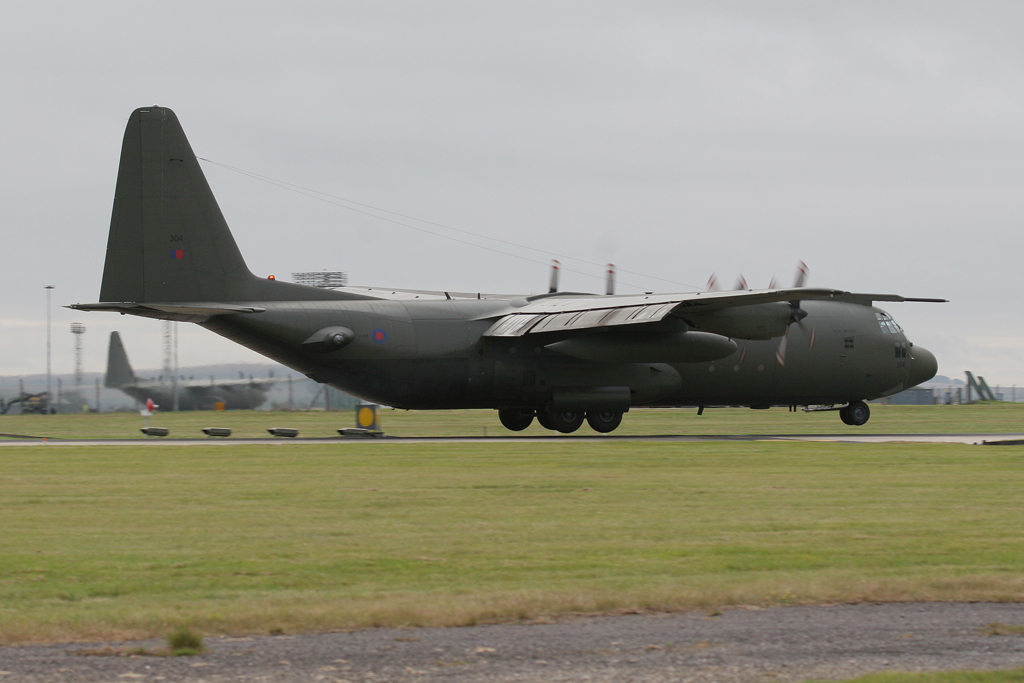

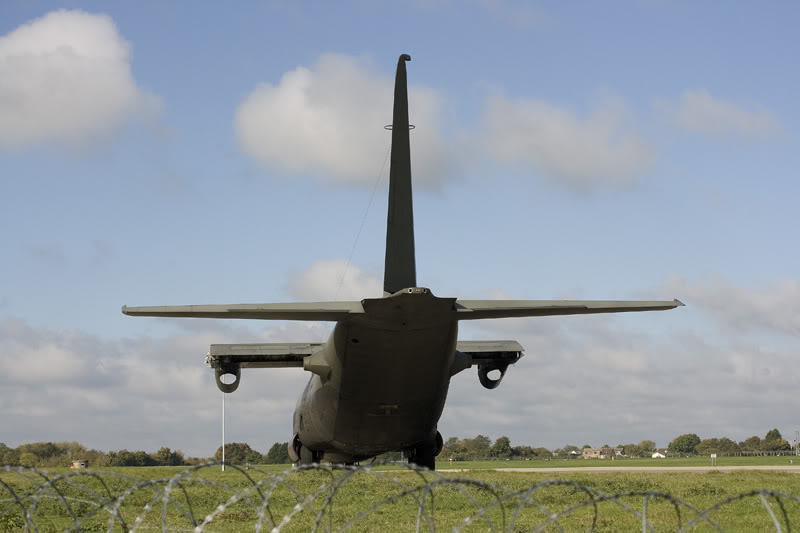
Crash of a Piper PA-31P-425 Pressurized Navajo in Oxford: 2 killed
Date & Time:
Jan 15, 2010 at 1407 LT
Registration:
N95RS
Survivors:
No
Schedule:
Oxford - Oxford
MSN:
31-7400221
YOM:
1974
Crew on board:
1
Crew fatalities:
Pax on board:
1
Pax fatalities:
Other fatalities:
Total fatalities:
2
Circumstances:
The aircraft had recently been purchased in Germany and was flown to the United Kingdom on 11 December 2009 by the pilot of the accident flight. The new owner, who accompanied him for the flight from Germany, was a private pilot himself and was the passenger in the accident. The aircraft landed at Oxford on the evening of 11 December. The pilot reported to a maintenance organisation that there had been a problem with the brakes after landing and the aircraft was left parked outside a hangar. Minor maintenance was carried out on 20 December 2009 and on 9 January 2010 the aircraft was refuelled, but it was not flown again until the accident flight. On the morning of 15 January 2010 the pilot and his passenger met at Oxford Airport and prepared the aircraft for flight. The plan was to carry out an air test, although its exact nature was not established. The flight was pre‑notified to Royal Air Force (RAF) Brize Norton as an air test with a requested level of FL190. At 1344 hrs the aircraft taxied out to Holding Point C for Runway 19 at Oxford. The pilot reported ‘READY FOR DEPARTURE’ at 1400 hrs and was given a clearance for a right turn after takeoff with a climb initially to FL80. The pilot then requested the latest weather information and the tower controller provided the following information: ‘........TWO THOUSAND METRES IN MIST AND CLOUD IS BROKEN AT 200 FEET.’ At 1403 hrs the takeoff commenced and shortly after liftoff Oxford ATC suggested that the pilot should contact Brize Radar on 124.275 Megahertz (MHz). The pilot made contact with Brize Radar at 1404 hrs, two-way communication was established and the provision of a Deconfliction Service was agreed. On the radar screen the Brize Norton controller observed the ‘Mode C’ (altitude) return increase to around 1,500 ft and then noticed it decrease, seeing returns of 1,300 ft and 900 ft, before the secondary return disappeared. At 1406 hrs the Brize Norton controller contacted Oxford ATC to ask if the aircraft had landed back there and was advised that it had not done so, but that it could be heard overhead. The Brize Norton controller told Oxford ATC that they had a continuing contact, but no Secondary Surveillance Radar (SSR). The Oxford controller could still hear an aircraft in the vicinity and agreed with the Brize Norton controller to attempt to make contact. At 1407 hrs Oxford ATC made several calls to the aircraft but there was no reply. The Oxford controller told the Brize Norton controller there was no reply and was informed in return that there was no longer any radar contact either. The Brize Norton controller also attempted to call the aircraft at 1407 hrs but without success. At 1410 hrs the Oxford controller advised the Brize Norton controller that there was smoke visible to the west of the airfield and they would alert both the airport and local emergency services. In the meantime several witnesses saw the aircraft crash into a field to the west of Oxford Airport. A severe fire started soon afterwards and bystanders who arrived at the scene were not able to get close to the aircraft. The local emergency services were notified of the accident by witnesses at 1407 hrs.
Probable cause:
The post-mortem examination showed that the pilot had severe coronary heart disease and there was evidence to suggest that he may have been incapacitated, or died, prior to the collision with the ground. The passenger was a qualified private pilot but was not experienced with either the aircraft or flight in IMC.
Final Report:
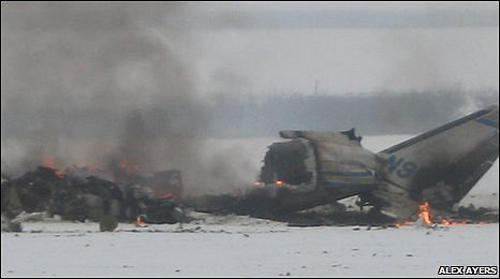


Crash of a Socata TBM-700 in Oxford: 3 killed
Date & Time:
Dec 6, 2003 at 1124 LT
Registration:
N30LT
Survivors:
No
Schedule:
Brussels - Oxford
MSN:
201
YOM:
2001
Crew on board:
1
Crew fatalities:
Pax on board:
2
Pax fatalities:
Other fatalities:
Total fatalities:
3
Captain / Total hours on type:
500.00
Circumstances:
Towards the end of a flight from Brussels to Oxford (Kidlington), the pilot was cleared to land from a visual straight-in approach to Runway 01. The surface wind was reported as 030°/15 kt. As the aircraft crossed the airfield boundary, it started to roll to the left. Shortly after, it struck the ground to the west of the runway threshold. Despite an extensive investigation, no technical malfunction was identified which could have caused the apparent uncontrolled roll to the left. Although there was no other conclusive evidence which would explain the manoeuvre, it is possible that control of the aircraft was lost during application of power to adjust the flight path or in an attempted late go-around, or as a result of an unknown distraction. The passengers was the French businessman Paul-Louis Halley, CEO of Carrefour, accompanied by his wife. They were en route to England to take part to a wedding.
Probable cause:
Despite an extensive investigation, no definite conclusion could be reached as to why N30LT crashed on a visual approach to Oxford (Kidlington) Airport. No technical evidence was found which would explain the uncontrolled roll but there were certain operational possibilities. Without hard evidence, however, none could be fully supported, but loss of control resulting from an unknown distraction, or during the application of power for flight path adjustment or an attempted late go-around, must be considered as possibilities. The lack of a crash protected data, voice or image recording system on N30LT made it impossible to successfully determine a specific cause or causes of this accident.
Final Report:

